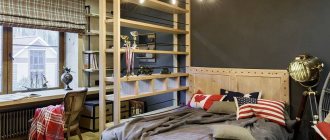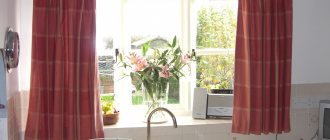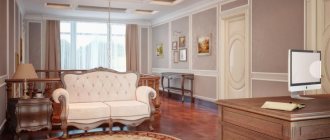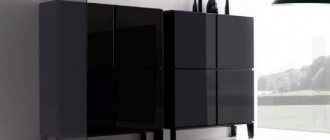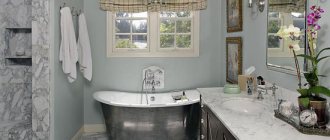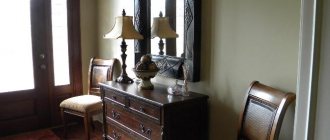The history of the creation of lighting fixtures in the Tiffany style
Tiffany chandeliers were invented at the beginning of the last century by American artist and designer Louis Comfort Tiffany (February 18, 1848 - January 17, 1933). His father was the founder of the jewelry company Charles Lewis Tiffany. The designer set himself the task of creating lighting technology that could adequately decorate the homes of wealthy nobles, and he successfully solved it. He patented a unique technique for creating and casting stained glass and producing colored mosaics, which made him famous throughout the world.
It should be noted that Louis Tiffany's studio collaborated not only with owners of private houses. Exquisite chandeliers and lamps were installed in the reception rooms of the White House. Each lighting device made using stained glass technology is unique and inimitable. And some models are considered rare and expensive, and are in the hands of collectors.
It is important to know. Some Tiffany-style chandeliers fetched $2-4 million at auction. Today, manufacturers offer more affordable lighting fixtures, but they are still in short supply.
The emergence of style
Most people associate Tiffany with a luxury jewelry brand. This style is often associated with the film “Breakfast at Tiffany’s,” which depicts the main character’s idea of the beauty of a wealthy life filled with comfort, luxury and happiness.
Interesting! In fact, the founder of the jewelry house began using a specific shade of turquoise in the packaging of his products long before the appearance of the film of the same name.
15
Louis Comfort, the son of the founder of the Tiffany Jewelry House, was surrounded by luxury goods since childhood. Having decided to devote his life to art, he became the creator of a style in which he used stained glass windows of extraordinary beauty. The creation of chandeliers and lampshades from special glass brought him worldwide recognition.
111
The creator of the Tiffany style was the first to use Art Nouveau in the interior. Louis's special technique was filigree-fine work with glass products. Taking eclecticism and vintage as a basis, Tiffany was able to create amazing works that have a special attractive power, which is why they look so harmonious in any interior.
An unmistakable combination with white, which helps to visually expand the space.
Features of Tiffany style lamps
Tiffany technique allows you to create complex patterns and three-dimensional figures with curves. Its essence is as follows: pieces of colored glass are wrapped around the edges with copper foil, and then they are soldered with tin solder.
Characteristic features of lighting devices:
- use of colored glass;
- absence of ornate forms, extraordinary bends, multi-tiered suspensions;
- lack of bright colors and shades;
- Abstract themes and natural motifs predominate in the lampshade ornament;
- use of forged decorative elements and gilding.
It is important to know. Stained glass undergoes special treatment, thanks to which chandeliers do not lose their aesthetic appeal, shape and color for many years.
What interiors and premises are chandeliers suitable for?
Chandeliers in the Tiffany style look appropriate in interiors decorated in classical, modern, country and Provence styles. Products with geometric elements will successfully complement the minimalist or hi-tech style. Installing such chandeliers will be the best solution if you need to make the interior of the room original and memorable. In order for the lighting technology to harmoniously combine with the furniture, fabric decor and decoration of the room, you should choose models with shades and lampshades in natural shades.
Recommendations for choosing lighting fixtures for different rooms are given in the table.
| Room | Which chandelier model to choose |
| Living room | Hanging chandelier with round or rectangular lampshade. You can use LED lamps in the shape of a ball. |
| Bedroom | Lighting fixtures decorated with floral patterns. |
| Hallway | Compact ceiling chandelier. |
| Kitchen | Stained glass lamp installed in the dining area above the table. |
| Cabinet | An elite Tiffany chandelier will look great in a spacious room. If necessary, it can be supplemented with lamps. |
Tiffany lamps should not be installed in rooms with high levels of humidity and dust.
LiveInternetLiveInternet
Quote from Zarya's message
Read in full In your quotation book or community!
Glass painting master class. Tiffany style stand
Among the glass artists who worked in the Art Nouveau style at the beginning of the 20th century, Louis Comfort Tiffany undoubtedly occupied a leading place. He is the author of magnificent creations made of colored glass: from giant stained glass windows to lampshades. The works of this master are highly valued to this day. This colorful piece was inspired by Tiffany's art. We used the design we developed to decorate a plant stand, but it can also be used to decorate windows, doorways, cupboard doors and even mirrors. This product is very easy to make because you can outline small parts of the pattern at a time with an outliner, rather than drawing long, winding lines all together. Create a pattern in parts, and the result of your work will pleasantly surprise you. You will need: - glass sheet of the required size - templates - tape - black outliner - paint brush No. 2 - water paints: pearl white, yellow, purple, turquoise, deep blue, bright green, deep blue, brown and amber Tip: When purchasing a sheet of glass, ask the glass cutter to cut off any sharp edges so that you do not injure yourself later while working.
1. Connect parts A and B of the template together and enlarge it to the desired size. Place the glass sheet on top of the template and secure them together with tape. Gradually outline individual parts of the pattern with a black outliner, exactly following the lines on the template. Let the paint dry, preferably overnight.
2. If necessary, bring the paints to a thinner consistency by diluting them with a small amount of water. Start covering the pattern with any one paint - in this case, first apply pearlescent white, on top of which apply strokes with yellow paint.
3. Paint the corresponding parts of the pattern with turquoise paint, apply a few drops of water to the wet paint and blend them so that highlights form after drying.
4. Cover the flowers at the bottom of the composition with purple, turquoise and yellow paints, also adding a few drops of water to create light streaks. Paint the leaves deep blue, dip the brush in water, apply a few strokes to create highlights. Let the paint dry.
5. Cover the remaining unpainted leaves with contrasting bright green and light green paints. Let the paints dry. Paint the flowers at the top of the composition in rich blue and purple colors, apply droplets of water to the wet paint and blend it. Cover the branches with brown and amber paints. Let the paints dry completely. Tip: If you are going to install glass in a window or door frame, protect the painted surface with another sheet of glass. Secure the glass along the edges with silicone glue or tape.
6. Cover the individual parts of the composition that remain unpainted with transparent paint, squeezing it a little straight from the tube. Apply the paint randomly so that after drying it forms an uneven, rough surface texture. Allow all paints to dry completely, then insert the glass into the base of the flower stand. Alan Geer and Barry Freestone "Glass Painting"
Sample
Master Class
Series of messages “Stained glass, glass painting”:
Part 1 - Master class on stained glass painting Part 2 - Glass painting. Candlestick. MK ... Part 5 - Master class on stained glass painting Part 6 - Painting glasses with outline on glass, master class Part 7 - Master class on glass painting. Tiffany style stand Part 8 - Glass painting master class. Vase with peacock feathers Part 9 - Glass painting master class. A vase decorated with metal... Part 32 - Master class on painting Part 33 - Painting on glass Part 34 - REVIEW OF MATERIALS ON PAINTING GLASS AND CERAMICS
Most Popular Brands
- ST Luce (Italy). This brand produces luxury lighting fixtures, the quality of which fully complies with strict European and Russian standards. If you want to decorate your room with an exquisite chandelier, we recommend paying attention to the ST Luce Lavoro model.
- Odeon Light (Italy). The chandeliers combine elegant design and high build quality; some models are finished with gold plating. Odeon Light Velute and Odeon Light Garden chandeliers will be a worthy decoration for any room.
Popular models of Tiffany chandeliers
- Lighting fixtures with shades of geometric shapes: square, triangle, rectangle, parallelogram, etc. Primary colors - white, beige, blue, green, red, brown. To decorate the lampshades, ornaments containing natural motifs are used: sea shells, cobwebs, lotus leaves, turtle shells, etc.
- Chandeliers with dome shades with floral and fruit themes. Lampshades are decorated with images of grapevines, apples and pears, peonies, daffodils and other flowers.
- Chandeliers with cone lampshades. The design is dominated by a floral theme.
It is important to know. If you are looking for genuine quality, you should give preference to lighting fixtures from the world's leading brands, made of expensive materials.
Tips and tricks for choosing Tiffany style chandeliers
- Lighting fixtures made using stained glass technology look catchy and attract attention, so there is no need to install several chandeliers in one room. One chandelier and a pair of lamps, a floor lamp or a table lamp are enough.
- The pattern of the chandelier and lamps should be the same.
- It is important that the color of the lighting fixtures matches the color scheme of the interior.
- If the room contains forged decorative elements, you should choose a chandelier that also contains them.
Tiffany style in the interior
Elegant chandeliers are not the only Tiffany heritage that has survived to this day and is deservedly popular among descendants. The interior in the Tiffany style is extraordinary and sophisticated; it is still of interest to designers.
Features of the style are as follows:
- Combining innovative materials in furniture and surface finishing with vintage decorative elements (vases, clocks, paintings).
- The presence of stained glass windows in the Tiffany style demonstrating landscapes. Natural motifs are usually saturated with bright colors.
- Forged products and designer items will fit organically into the interior.
- The Tiffany style can be considered an offshoot of the Art Nouveau movement, so furniture with sharp corners and straight lines is avoided in the setting.
Attention! The personification of luxury and an integral attribute are Tiffany lamps. Ceiling chandeliers are complemented by floor lamps and table lamps. - Door and window openings are made in the form of arches.
- Surface finishing and decorative textiles contain floral patterns and ornate patterns.
- Panels, mosaics and large mirrors organically complement the Tiffany style.
- The interior is dominated by pastel colors. Sea turquoise is combined with white, sand and cream shades.
In addition to the Tiffany style, stained glass lamps look organic in other interiors. The ethnic atmosphere of country and Provence, comprehensive eclecticism and intricate art deco are suitable for them. The approach to choosing a Tiffany chandelier, floor lamp or sconce for a living space depends on its functional purpose.
Living room. Paired sconces made using stained glass technique, which have a similar compositional solution to a hanging chandelier, will look relevant. This technique is also relevant for other rooms, including the kitchen. Attention is focused on the compact size of the lamps and their emphasized decorative effect.
Bedroom. The main goal when decorating a relaxation room is to achieve an atmosphere of tranquility that maximizes relaxation. The classic ceiling chandelier is complemented by a floor lamp made of stained glass, which can be easily moved to another room. The Tiffany table lamp is convenient for reading books. Muted and soft light from stained glass elements allows you to achieve the desired effect of calm in the interior.
Children's room. A night light in the Tiffany style will help fill a child's room with fabulous colors. A classic imitation of a flower or an extraordinary mini lamp in the shape of a turtle, softly scattering light, will distract the child from sad thoughts and quickly take him to the world of dreams.
Depending on the glass processing technique, chandeliers and other lighting fixtures in the Tiffany style are in different price categories. In addition to exclusive expensive items, you can choose budget models that can effectively decorate the interior of a living space.

